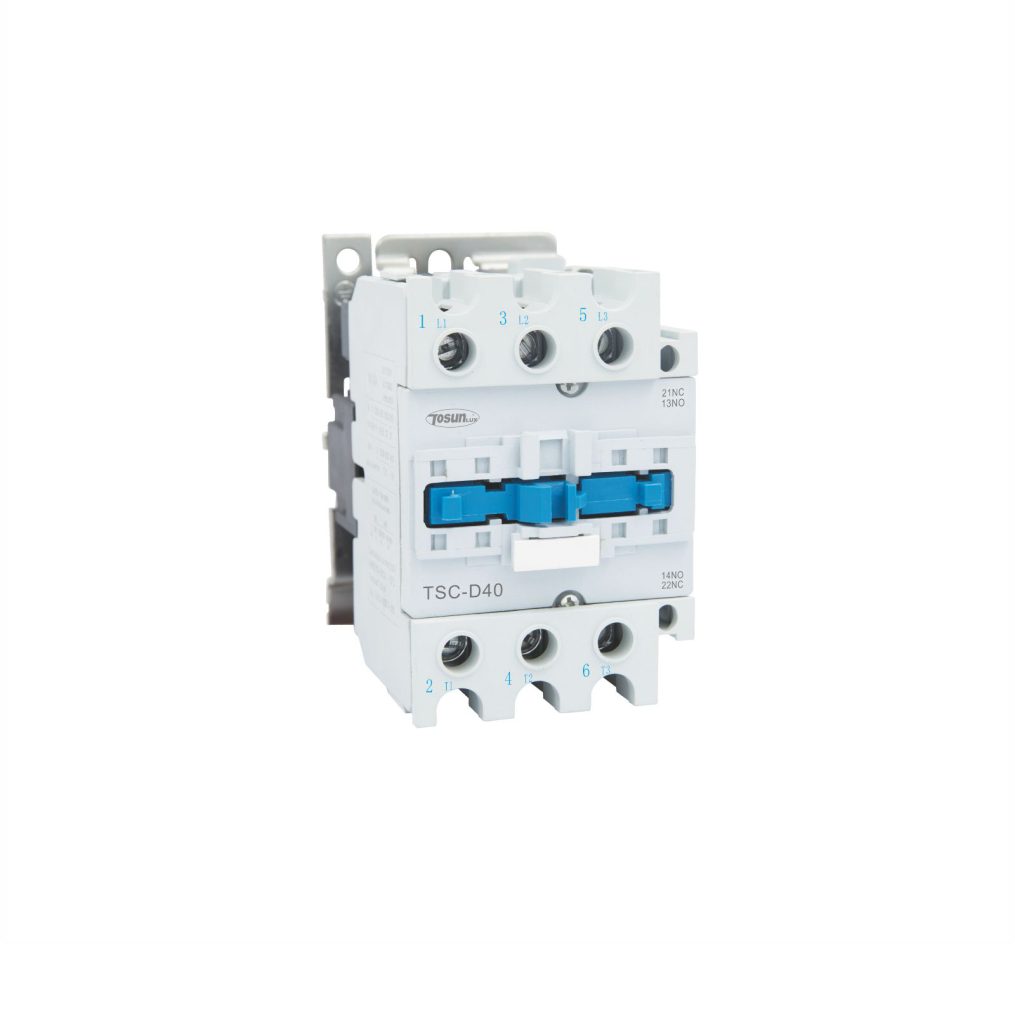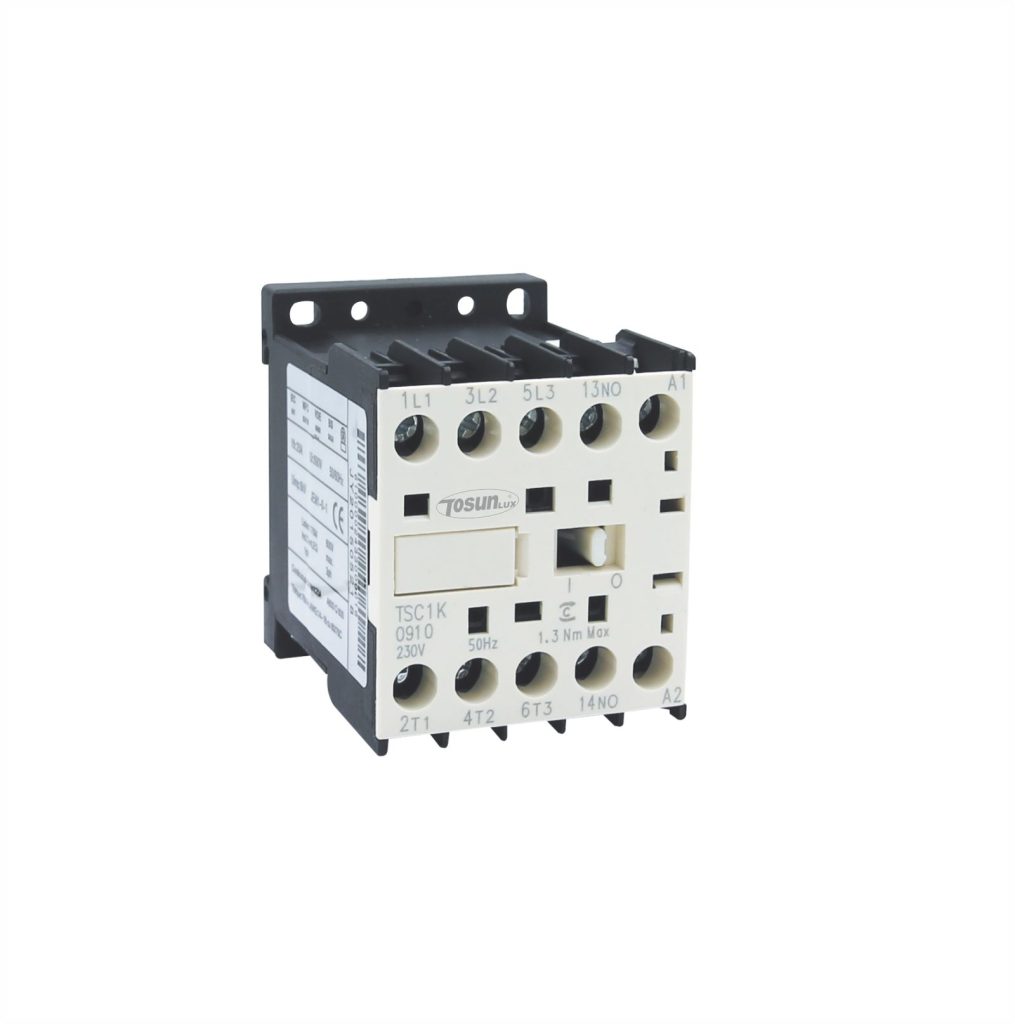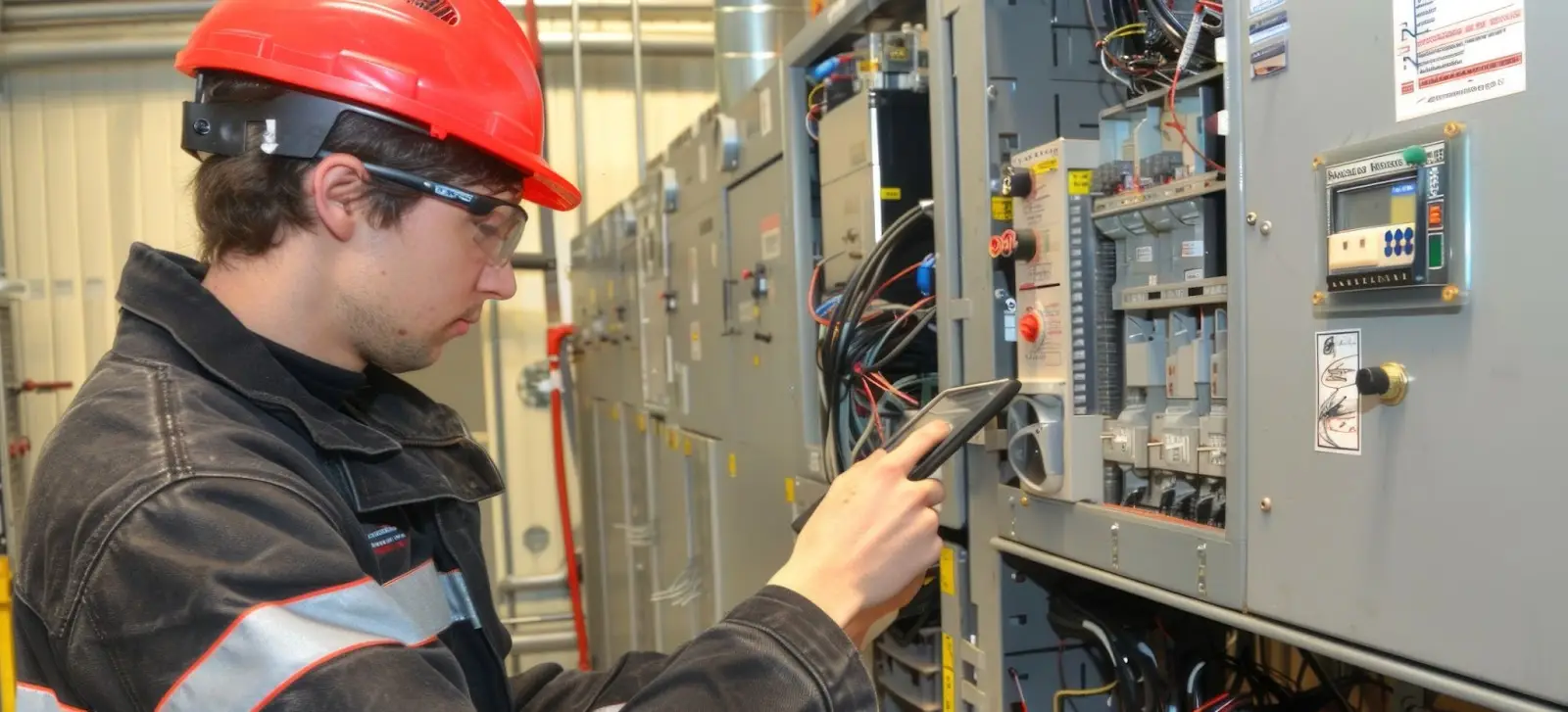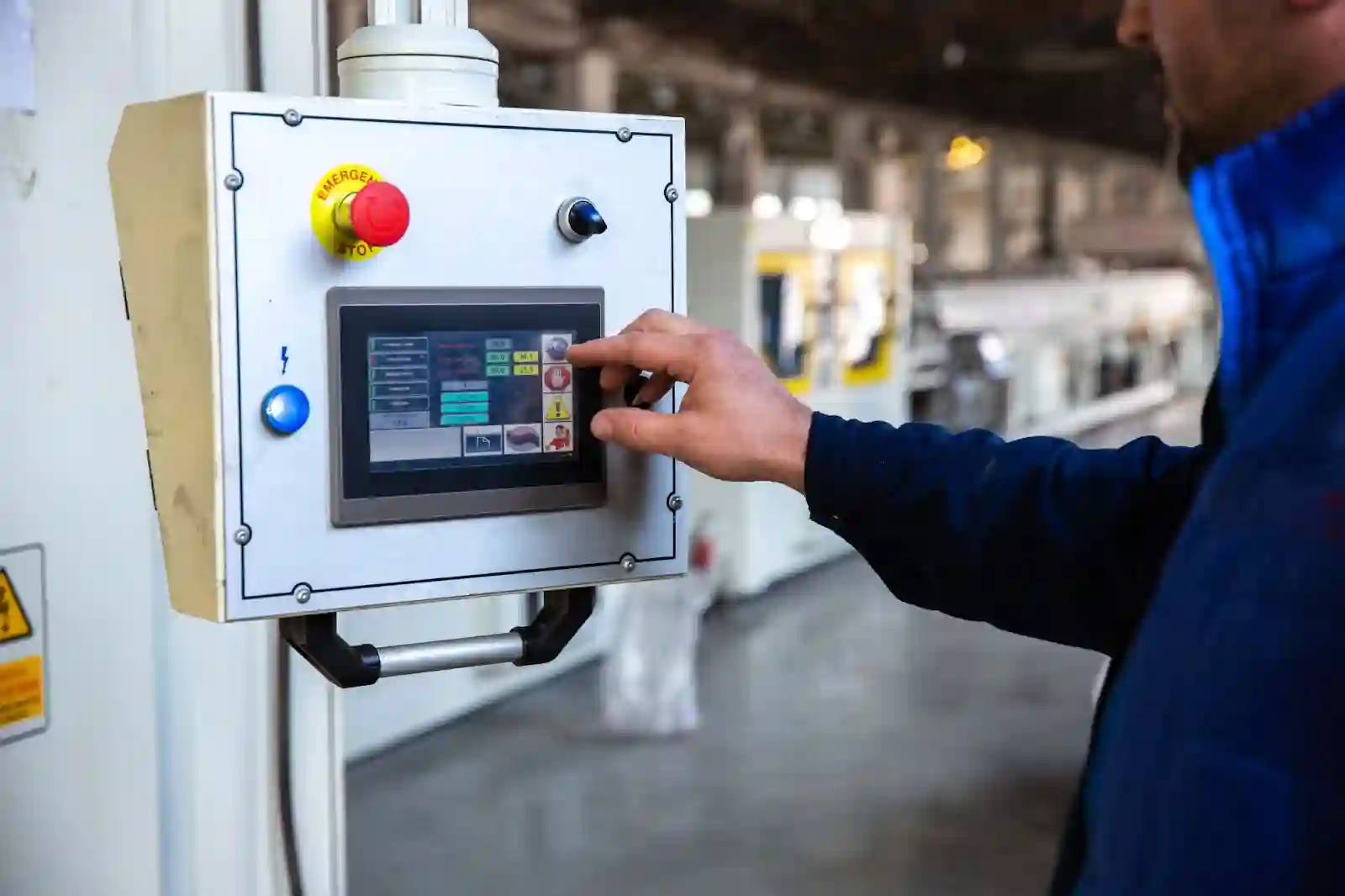Difference between AC Contactors and DC Contactors
Table of Contents
ToggleDid you know that AC contactors are essential for controlling electrical devices like large motors and lighting installations? Understanding the differences between AC and DC contactors is crucial for anyone working with electrical systems.
This article dives into the key features, benefits, and applications of both AC and DC contactors, highlighting how they manage power supply, arc suppression, and heat generation. You’ll discover why AC contactors are preferred for fluctuating power and heavy motor currents, while DC contactors are ideal for steady current flows. Whether you’re an electrician, engineer, or curious learner, this comprehensive guide will equip you with valuable insights into these vital components of modern electrical systems.
What Are AC Contactors?
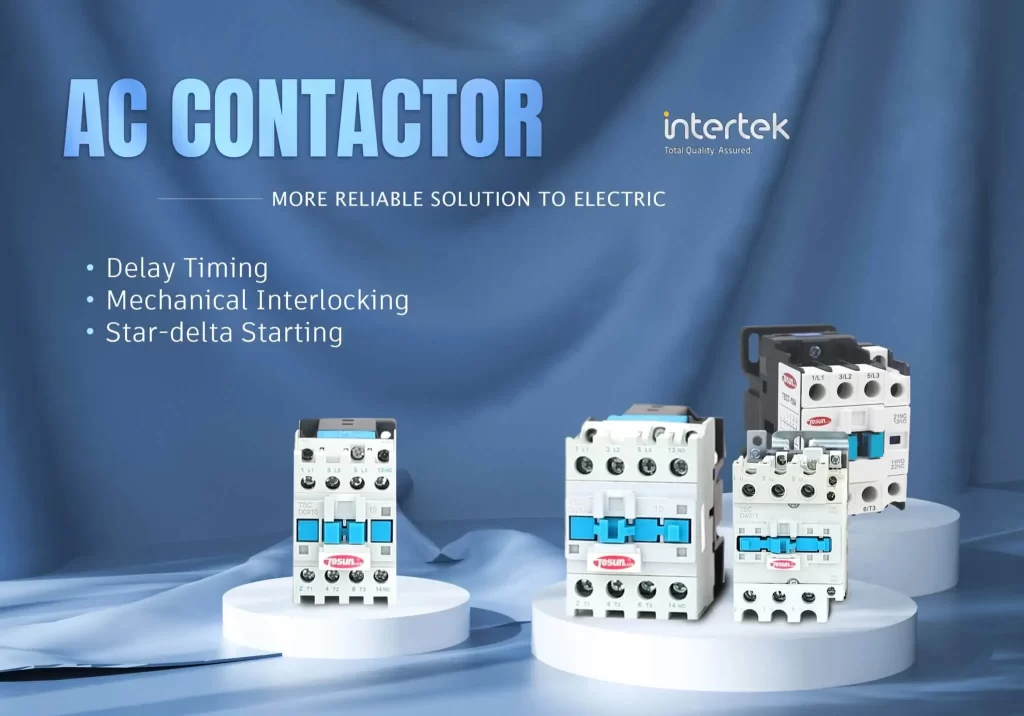
AC contactors are electrical devices used to control the flow of electricity in circuits. They operate using electromagnetic fields, which are created by a coil. The coil voltage can be powered by either an AC or DC supply. AC contactors consist of a coil, a moving iron core, and auxiliary contacts.
Key Features:
- Coil Design: AC contactors have a ring-shaped coil made of iron with low resistance. This design helps generate a magnetic field that closes the power contacts.
- Magnetic Core: The magnetic core amplifies the magnetic flux produced by the coil. This magnetic force is essential for the contactor’s operation.
- Auxiliary Contacts: These allow a small amount of current to pass through and are usually connected to a control circuit.
- Applications: AC contactors are used in various applications, such as controlling electric motors, switching large lighting installations, and managing other electrical loads.
Benefits:
- Versatility: Suitable for fluctuating power and controlling heavy motor currents.
- Efficiency: They help improve energy efficiency in large setups.
- Range: AC contactors come in different sizes, from small units to large devices up to a meter wide.
Specifications:
- Breaking Current: Capabilities range from a few amperes to thousands.
- Voltage Ratings: Span from 24V DC to several kilovolts.
AC contactors are essential components in electrical systems, providing reliable and efficient control over various applications. They are a vital part of ensuring safety and functionality in both residential and industrial settings.
What Are DC Contactors?
DC contactors are devices used to control the flow of electricity in DC circuits. They are essential for various industries, including electric vehicles, solar power systems, trains, and telecommunications. These contactors help manage high-energy equipment safely and protect sensitive components during operations.
Key Features:
- Coil Design: DC contactors have short, thick coils with many turns. This design helps create a strong magnetic field necessary for operation.
- Arc Suppression: They use magnetic arc extinguishing to safely handle the electric arcs that occur when switching currents.
- Heat Management: DC contactors generate more heat and require space around the coil for heat dissipation.
- Applications: Commonly used in systems with steady, constant current flow, such as electric vehicles and solar power installations.
Specifications:
- Current Ratings: Typically range from 10A to 1000A.
- Voltage Ratings: Can handle up to 1500V DC.
- Operation Cycles: Designed for frequent on and off cycles, making them suitable for industrial use.
Benefits:
- Durability: Built to withstand frequent switching and harsh environments.
- Safety: Provides effective overload protection for electric motors and other components.
- Efficiency: Helps maintain consistent power supply and reduces energy waste.
DC contactors are vital for ensuring the safe and efficient operation of DC-powered systems. They play a crucial role in modern electrical applications, offering reliable control and protection for various devices and systems.
The Difference between AC Contactors and DC Contactors
| Feature | AC Contactors | DC Contactors |
|---|---|---|
| Coil Design | Thin, long coils with few turns and low resistance | Short, thick coils with many turns and higher resistance |
| Arc Suppression | Grid arc extinguishing | Magnetic arc extinguishing |
| Heat Generation | Generates less heat | Generates more heat |
| Placement | Can be placed anywhere | Requires gaps around the coil for heat dissipation |
| Starting Current | Higher starting current | Lower starting current |
| Operation Frequency | Lower maximum operation frequency | Higher maximum operation frequency |
| Actuation Cycles | Limited number of actuation cycles | Can be actuated every two hours or more |
| Coil Inductance | Lower inductance | Higher inductance |
| Application Suitability | Suitable for fluctuating power | Suitable for steady, constant current flow |
| Size | Typically larger | Typically smaller |
| Cost | Generally less expensive | Often more expensive |
| Arc Suppression Power | More powerful than relays, better for heavy motor currents | Less powerful than AC contactors |
This article highlights the main differences between AC and DC contactors, focusing on coil design, arc suppression, and heat generation. AC contactors are ideal for handling fluctuating power and controlling heavy motor currents. They come in various sizes, from small units you can hold in one hand to large devices up to a meter wide. Their breaking current capabilities range from a few amperes to thousands, and voltage ratings span from 24V DC to several kilovolts.
Additionally, TOSUNlux is highlighted as a reputable supplier of AC contactors, providing quality products for various electrical needs. For those looking to enhance their electrical systems with reliable and efficient AC contactors, explore TOSUNlux’s extensive range of products today. Visit their website to learn more and find the perfect contactor for your application!
Frequently Asked Questions
1. What happens when an AC contactor goes bad?
When an AC contactor fails, it can lead to a variety of issues such as the inability to start or stop an electric motor, overheating, or even electrical fires due to continuous power flow. Regular maintenance and inspection can help prevent these problems.
2. How can I tell if a contactor is AC or DC based on coil voltage?
You can identify an AC or DC contactor by examining the coil design and markings. AC contactors typically have thin, long coils, while DC contactors have short, thick coils. Additionally, product labels or manuals usually specify the contactor type.
3. Can I replace an AC contactor myself?
While it is possible to replace an AC contactor yourself, it is recommended to have a qualified electrician perform the replacement to ensure safety and proper installation. Working with electrical devices can be hazardous if not done correctly.
4. What is the difference between AC1 and AC3 contactor?
AC1 contactors are used for non-inductive or slightly inductive loads, such as electric heating. AC3 contactors are designed for starting and stopping squirrel cage motors, handling higher inrush currents and making them suitable for motor applications.
5. Can I use an AC contactor for DC?
Using an AC contactor for DC applications is not advisable due to differences in coil design and arc suppression methods. DC currents require specific contactors designed to handle continuous current flow and prevent arcing effectively.
Tel: +86-577-88671000
E-mail: ceo@tosun.com
Skype: tosunelectric
Wechat: +86-139 6881 9286
WhatsApp: +86-139 0587 7291
Address: Room No.1001 Wenzhou Fortune Center,Station Road, Wenzhou, China
REQUEST A QUOTE
WhatsApp us
 : +86-139 0587 7291
: +86-139 0587 7291 English
English Español
Español Русский
Русский Français
Français العربية
العربية Português do Brasil
Português do Brasil Українська
Українська Türkçe
Türkçe Polski
Polski Nederlands
Nederlands Italiano
Italiano Bahasa Indonesia
Bahasa Indonesia हिन्दी
हिन्दी اردو
اردو አማርኛ
አማርኛ Հայերեն
Հայերեն ไทย
ไทย Монгол
Монгол فارسی
فارسی Shqip
Shqip Ελληνικά
Ελληνικά
